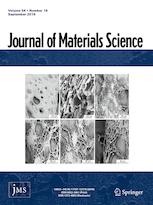Since the new superconductors are ceramics the technique for making them is quite similar to making other ceramics.
Growing field of superconductive ceramics.
The magnetic field they produce measures 8 3 t tesla which is over 100 000 times greater than earth s magnetic field.
Besides the precursor chemicals all that is needed is a mortar and pestle a die mold and a well ventilated kiln or furnace that can reach a temperature of about 1700 degrees fahrenheit 975 degrees celsius.
The discovery of high temperature above the temperature of liquid nitrogen ceramic superconductors has changed superconductivity from an interesting curiosity to a useable technology with particular applications in the medical field as a superconducting magnet in mri scanners.
There is a vast and growing literature on the theory of high t c superconductivity but no clear consensus as to the mechanism.
A team of scientists from the university of houston texas developed a calcium titanium oxide ceramic material that became a superconductor at 183 c.
The temperature at which these materials became superconductive was close to the boiling point of liquid nitrogen 196 c.
The magnetic field is excluded from the superconductor but also the field is expelled when the field is applied in the normal state and as is cooled through the superconducting state.
Texturing is essential to achieve high current densities in polycrystalline wires or the thick films of ceramic superconductors.
The new ceramic oxide superconductors are type ii superconductors and early research indicated upper critical fields that appear to be at least as high as anything yet discovered.
Chemical formula is yba2cu3o7.
Superconductors are also used in nmr and mass spectrometers and.
3g hts round strands can efficiently transmit.
In 1987 a major breakthrough in the superconductor field occurred.
The high t c field is continually expanding.
Penetration of the raised magnetic field in the sintered 3g hts ceramic samples at cryogenic temperatures.
Growing very fast close to the transition temperature and stabilizing at.
The superconducting ceramics of high transition temperature basic phenomena.
One paper 6 stated that the upper critical field of yttrium barium copper oxide is 14 tesla at liquid nitrogen temperature 77 degrees kelvin and at least 60 tesla.
The most significant new materials are bismuth based.
Engineering of superconductive ceramics.
The superconductor we will be experimenting with is an yttrium y barium ba and copper cu composition.
Yba 2 cu 3 o 7 x was the first ceramic superconductor discovered with t c greater than liquid nitrogen temperature.
Humphreys in concise encyclopedia of advanced ceramic materials 1991.

